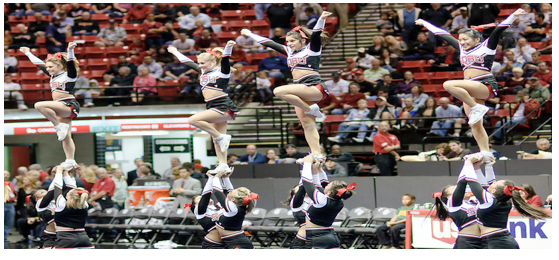ZOCALO PUBLIC SQUARE - Like parents with more than one child, Californians say they love all of their higher education systems equally. But everyone knows that the University of California is really the favorite, with its collection of beautiful seaside campuses and college-town enclaves, high-powered academics, world-renowned research labs and nationally ranked athletic powerhouses.
The California State University System? Not so much. This scrappy array of 20 campuses is the underappreciated younger sibling always striving to win more affection, usually to no avail.
This week two of those CSU campuses get a rare moment in the sun, or moment under the lights of distant arenas. San Diego State, my alma mater, and Cal State Long Beach will send representatives to March Madness, the annual national tournament that ends with the crowning of a new college basketball champion.
Neither campus will shy away from the national publicity the tournament brings. Nor should they. It’s their rare chance to shine in a world so often dominated by the UCLAs and the UC Berkeleys.
Still, while producing a couple of pretty good basketball teams is a notable achievement, no one should judge the quality of a university by the success of its sports teams. And, while attention from New York and Chicago might be nice, the entire CSU would be better served if the tournament brings a bit more recognition from the folks at home, right here in California. The CSU does something every day, every month, every year, that deserves far more attention.
For all the glitz of the University of California, the CSU is California’s indispensible workhorse of higher education. It’s an engine for growing and sustaining the middle class, a ladder of opportunity that has allowed the children of low-income families to move into the economic mainstream.
It certainly delivered for me. I was just the second of eight children in my family to graduate from college. While we were already in the middle class, my parents’ divorce had left my mom and my brothers clinging precariously to that status. I graduated from high school near the top of my class and had decent SAT scores, yet I never considered applying to the University of California, because there was no way my family could have afforded it.
So it was on to the local school, San Diego State. There, despite the low fees—it cost me less than $500 a year to attend—I had to work three jobs to make ends meet. I lived with two or three other guys in shabby apartments on “Montezuma Mesa” near the campus, spending one semester sleeping in a closet under a staircase to save a few bucks.
After four and a half years, I got a degree in economics, a minor in journalism, and a ton of practical experience in the job of my choosing. Thanks to my work at the college daily, I was able to go directly from San Diego State to a job as a reporter with the Los Angeles Times and a career in newspapers and online journalism.
That sort of professional training is the bread and butter of the CSU system. Its campuses award the lion’s share of professional degrees in the state, including 95 percent of degrees in hospitality and tourism, 76 percent in agriculture, 69 percent in criminal justice, and 53 percent in the fast-growing sector of business and professional services. The CSU is also California’s single largest producer of nurses and engineers. Forty-six out of every 100 Californians who earned an undergraduate degree in this state last year got it from a CSU school.
Increasingly, those graduates are minorities. Latino undergraduate enrollment at the CSU has increased by 68 percent over the past decade, to 113,000. Within the next year or two, Latinos will probably pass whites to become the largest ethnic group in the system. The CSU, in other words, looks a lot like the rest of California.
The CSU’s pursuit of its mission has not been helped by the deep budget cuts it has suffered over the past few years as the state’s economy and tax revenues have stagnated. California is spending half a billion less in general tax dollars on the CSU this year than it did 10 years ago, despite a 15 percent increase in undergraduate enrollment.
As the taxpayer contribution has declined, students and their families are making up much of the difference with higher fees. Long gone are the days I enjoyed when fees amounted to a few bucks per month. Today, it costs about $5,300 to attend the CSU for a year, plus all the other costs of living.
But even that higher price is still less than the national average for public universities, and after financial aid, full-time students at the CSU pay an average of about $2,000 per year. That’s not cheap, but it’s within reach of most families and probably still a bargain for the money.
So as the Aztecs and the 49ers begin (and hopefully extend) their presence in the NCAA tournament this week, by all means let’s root them on. But no matter how far the basketball teams go, once the excitement ends and the cheers fade away, the schools themselves will remain, educating and training tens of thousands of future California professionals and civic leaders every year.
(Daniel Weintraub graduated from San Diego State University in 1982. He has been writing about California public policy and politics since then and currently edits the California Health Report at www.healthycal.org.) This article was posted first at zocalopublicsquare.org. Photo courtesy of SD Dirk. -cw
Tags: Education, California schools, March Madness

CityWatch
Vol 10 Issue 22
Pub: Mar 16, 2012

